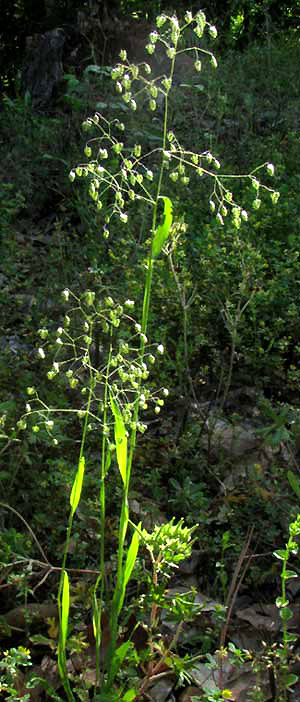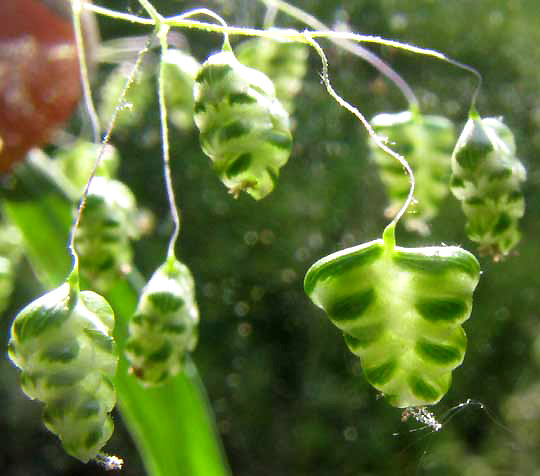Excerpts from Jim Conrad's
Naturalist Newsletter
from the April 8, 2012 Newsletter issued from the forest a few miles east of Natchez, Mississippi, USA; elevation ~400ft (120m), ~N31.47°, ~W91.29°
LITTLE QUAKING-GRASS
 Along the winding gravel-and-sand road coming through the woods to the camp there's a little 18-inch-tall (45cm), weedy roadside herb you might not notice unless you're just looking for such a thing, shown at the right.
Along the winding gravel-and-sand road coming through the woods to the camp there's a little 18-inch-tall (45cm), weedy roadside herb you might not notice unless you're just looking for such a thing, shown at the right.
Its diffuse clusters of Chinese-lantern-like flowers shudder with the merest breeze, very prettily so if back-lighted by the rising or setting sun. You can see that the narrow, upward directed blades arising from the stems below the flowers are grasslike, and in fact this is a grass, but a species with very distinctive, easy-to-recognize flowers. They're shown at the bottom of this page.
Each of those dangling, triangular (or "deltoid") items is a flower cluster -- in grass terminology called a spikelet. Each spikelet is composed of nine or so flowers, or florets. You might enjoy relating what's seen in the above picture with the floral anatomy labeled and discussed on our Grass Flowers page.
This is BRIZA MINOR, most commonly known in English as Little Quaking-Grass. At least in North America where it's a weed, it's regarded as having little value as a forage plant and for wildlife. It's native to the Mediterranean Basin, but in North America it's commonly encountered in the US southeastern and western states.

As you can see, if you get close and look at it from just the right angle, it's pretty. And with the changes and extinctions to be wrought by global warming, who knows what value this grass will have here in the future?